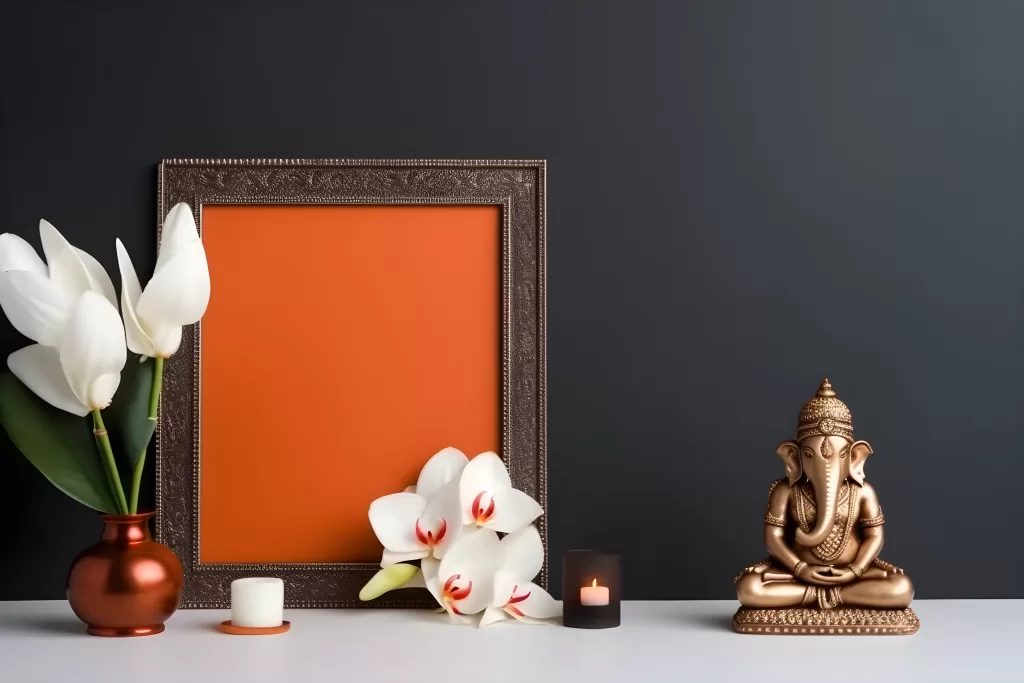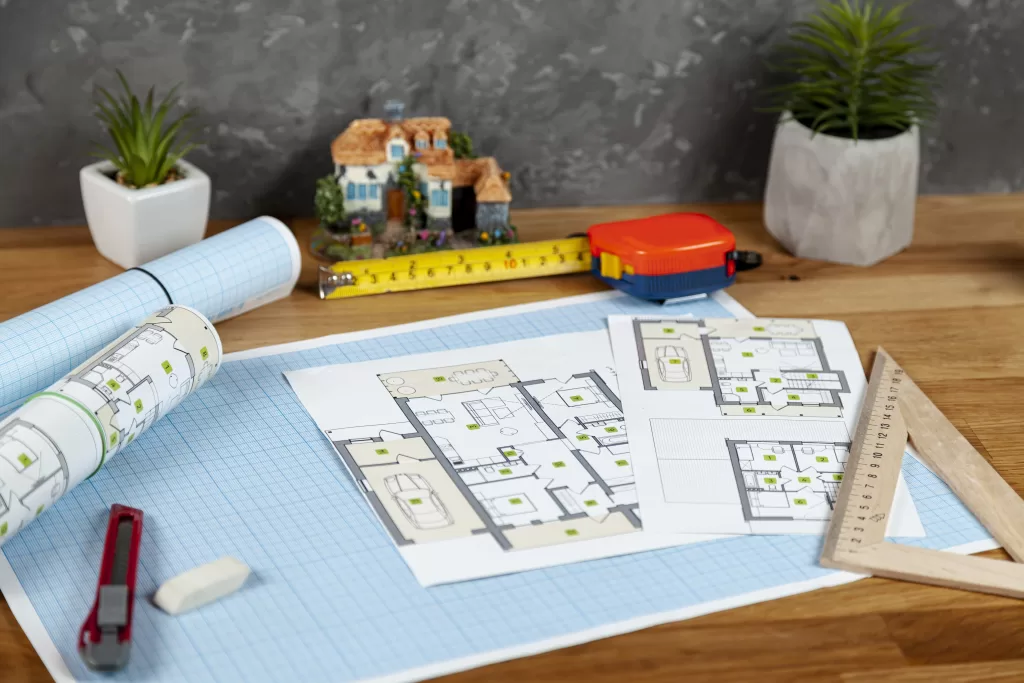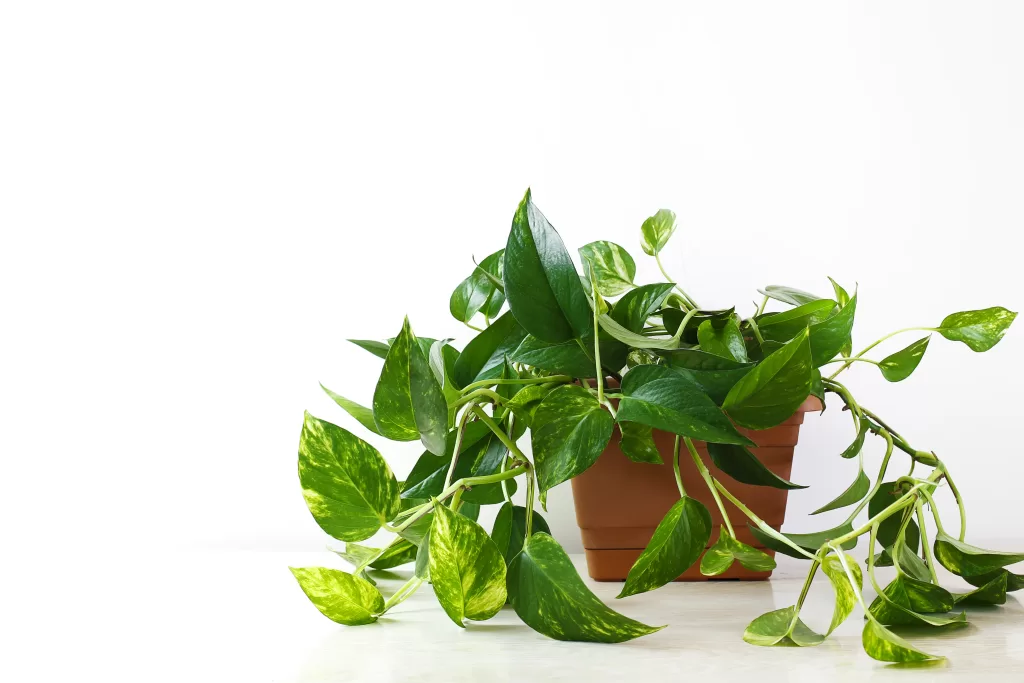In most homes, you will find a special place for worshipping. This space must be properly organised and cared for. Whether it is a puja ghar or a dedicated home temple, Vastu Shastra, the ancient science of architecture, provides guidelines on how to properly maintain a home temple. If you are planning to have a new home temple, consider the following rules for mandir direction as per Vastu Shastra.
Significance Of Mandir Direction as Per Vastu Shastra
In ancient India, constructing a house was not just about physical architecture. It was considered sacred and deeply rooted in spiritual beliefs. The house was perceived as a living entity with its own spirit, termed as the ‘Vaastu Purusha’. The allocation of different directions to various deities reflects the belief that each direction carries a specific energy influenced by the corresponding deity.
Here the northeast, or Eeshan, is believed to be presided by divine power and considered suitable for worshipping. Additionally, a profound respect is given for the natural flow of energies within the living spaces in Vastu Shastra. It indicates a harmonious coexistence with the energies inherent in the environment that strikes a balance between the constructed structure and the surrounding energies.
Direction of the Temple as per Vastu Shastra
In Vastu Shastra, the direction a mandir (home temple) faces is considered important to maintain the flow of positive energies and spiritual resonance within the home. The most auspicious direction for a mandir to face is the east. Placing the mandir in the east direction is believed to align with the rising sun. It symbolises new beginnings, enlightenment, and positive vibrations.
The East is associated with the flow of vital energy and divine blessings. When the deity faces eastward, it is believed to receive the first rays of the morning sun, infusing the space with auspiciousness and vitality. However, if due to space constraints or other reasons, facing east is not feasible, north-facing temples are also considered favourable. The north direction is associated with prosperity and abundance, making it another suitable option for placing a mandir.
Placement of Deities in the Home Temple
The arrangement and positioning of idols within the home temple play a vital role in Vastu Shastra. It contributes to the flow of positive energies and spirituality.
Facing East or North:
Ideally, the idols in the mandir should face east or north. Placing them in these directions is believed to invite divine blessings and channel auspicious energies within the space.
Central focus:
The primary idol or deity should be placed at the centre or the back of the temple, facing towards the preferred direction (east or north). This positioning signifies the focal point of divine presence and fosters a harmonious flow of energies within the space.
Height and placement:
Additionally, the idols should be placed at an appropriate height, ensuring that they are neither too high nor too low. Placing them at eye level or slightly higher when seated is considered auspicious.
Multiple Idols:
If multiple idols are present in the mandir, each should be positioned in a way that they do not directly face each other. This arrangement is believed to maintain individuality and prevent any clash of energies between the deities.
Tips To Follow To Maintain Mandir
Some tips that you can follow to keep your worshipping area and home temple auspicious and pure are mentioned below:
Cleanliness is Key:
Before placing the idols in the mandir, ensure they are clean. Wipe them gently with a soft cloth and, if required, use a mild solution of water and cleanser appropriate for the material of the idols. Keeping the idols clean maintains their sanctity and purity.
Placement with devotion:
When positioning the idols in the mandir, do so with utmost devotion and reverence. This act of placing the deities symbolises inviting the divine into your home, fostering a connection between the spiritual and the earthly.
Avoid clutter:
Maintain a clutter-free space around the idols. Too many objects or overcrowding can disrupt the flow of energy within the mandir. Keep the area around the idols clean and organised.
Lighting and ambience:
Soft and serene lighting can enhance the spiritual ambience. Lighting incense or candles is a traditional practice that not only adds to the atmosphere but also symbolises purity and devotion.
Mandir in Home as per Vastu Shastra: The Dos and don’ts
Here are some essential dos and don’ts that you can follow when it comes to your prayer room:
Dos:
-
- The walls’ colours should preferably be white, light yellow, or light blue to foster a serene ambience. Opt for white or light-yellow marble work in the worship room.
-
- Ensure that the worship room has doors and windows in the north or east for enhanced flow of positive energies.
-
- Place the lampstand in the southeast or east corner of the home temple.
-
- If there’s an Agni Kund (fire pit), it should be in the southeast direction of the Mandir. Offerings to the fire should be made facing east.
-
- Home temple should have a shape of a pyramid (slope on all four sides of the roof), as it is considered auspicious.
Don’ts:
-
- Mandir should not be in the south direction within your house.
-
- Avoid placing the home temple in the bedroom.
-
- Ensure that the temple is neither above, below, nor next to a toilet or kitchen area.
-
- Avoid placing showcases, almirahs, scenes from the Mahabharat, photographs of birds and animals, or idols in a desecrated form in the temple area.
-
- The idol should not be directly in front of the entrance gate.
-
- Idols should not touch the wall directly. Maintain a gap of at least an inch from the wall.
-
- Avoid setting up the Pooja room in a store or storage area.
-
- Use a two-shuttered wooden door for the temple and avoid using inferior-quality wood.
-
- Ensure proper ventilation in the upper half of the temple area.
Opt for one of the best grey cement in India to ensure a strong and durable structure!
FAQs
Which direction should the mandir be facing?
The mandir should ideally face the east or north direction.
Which direction should deities or idols face in the house?
Idols should face east or west direction within the house.
Which direction is best for placing a home temple?
The northeast direction (Eeshan) is considered best for the placement of the temple.
Which type of mandir is good for a home?
A pyramid-shaped mandir (with a slope on all four sides of the roof) is considered auspicious for home worship.
Why is rice kept in the puja thali while worshipping?
Rice symbolises energy and abundance and is mixed with Kumkum tilak to offer blessings during rituals and ceremonies.
Can I place the mandir in front of the main door?
As per Vastu Shastra, it is suggested to avoid placing the mandir directly in front of the main door.
Can I place idols directly in front of the walls?
Idols should be kept at least an inch away from the walls, not directly touching them, to maintain sacredness and energy flow.














